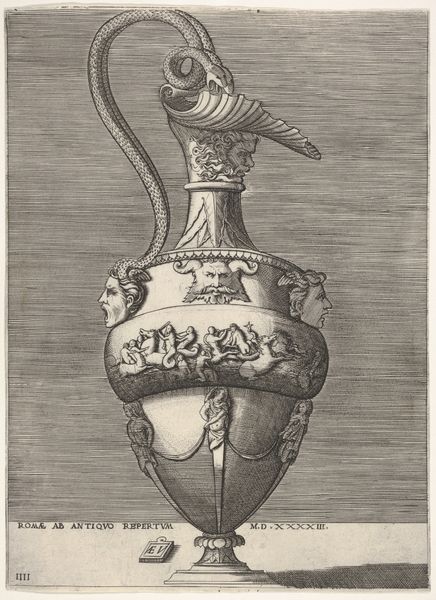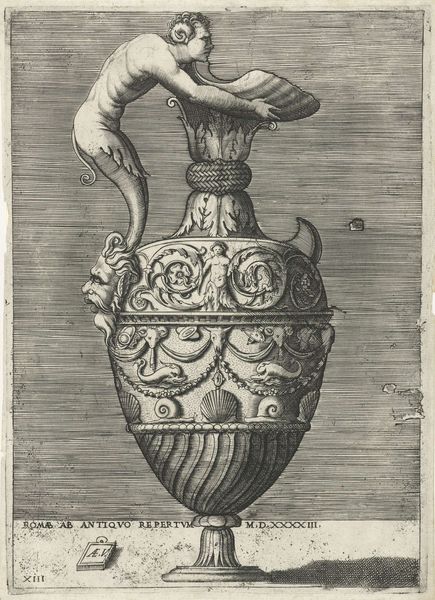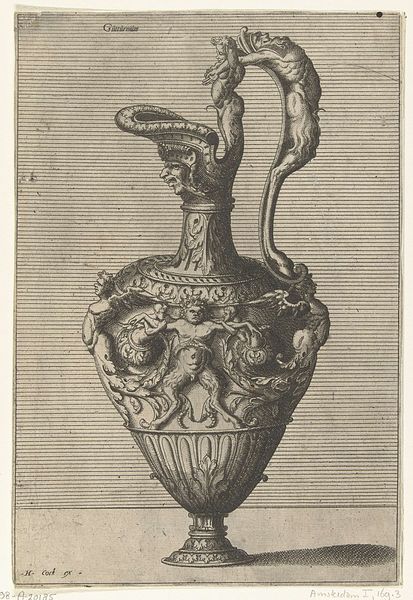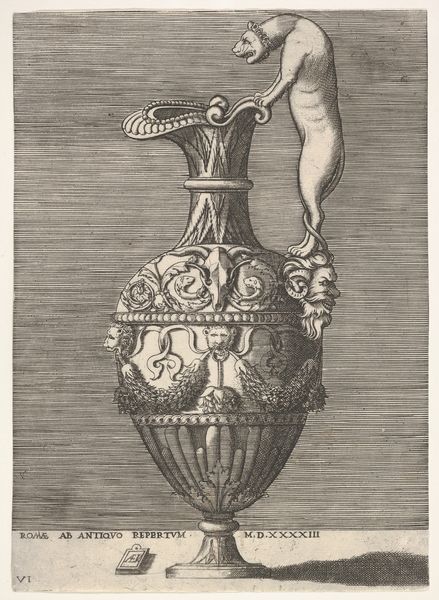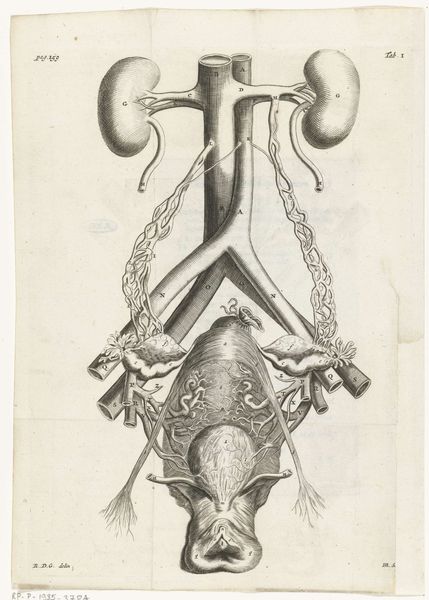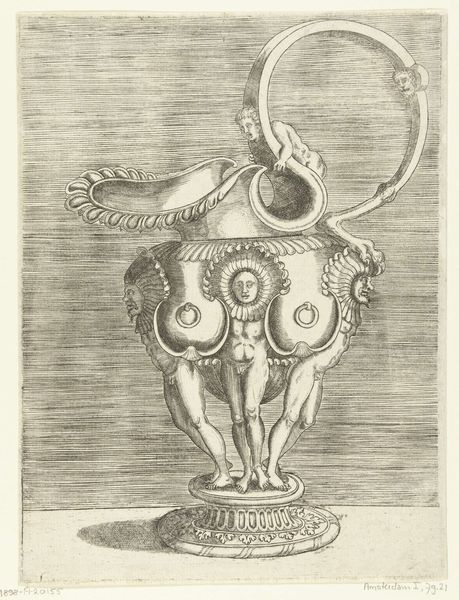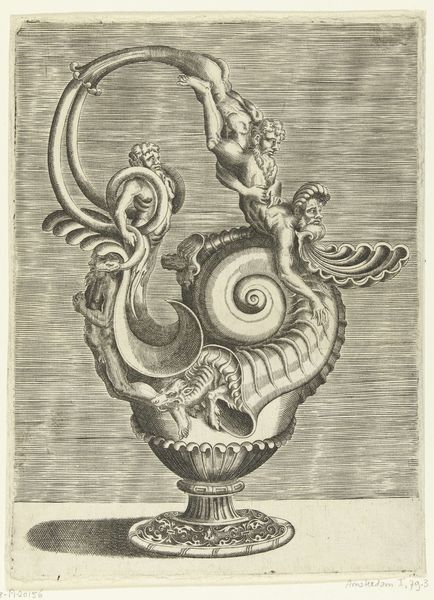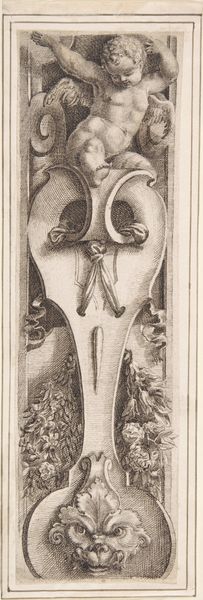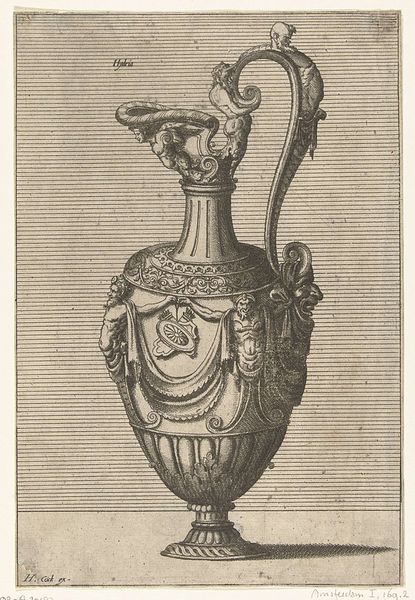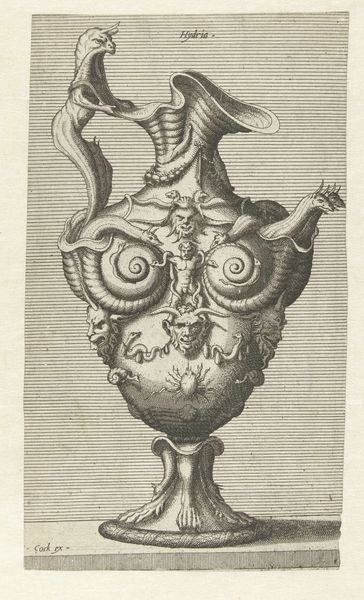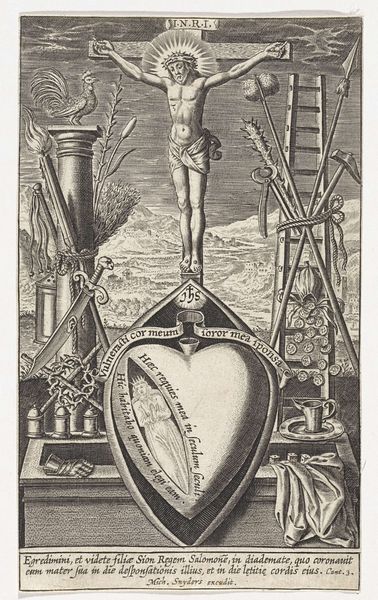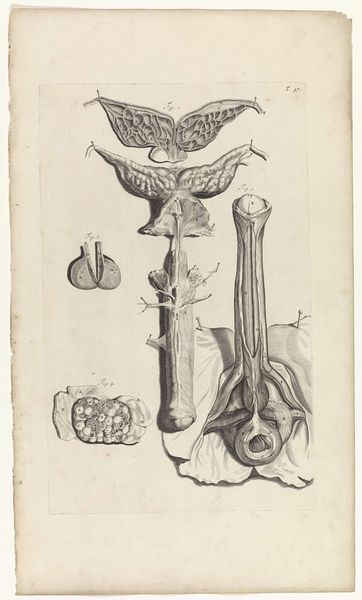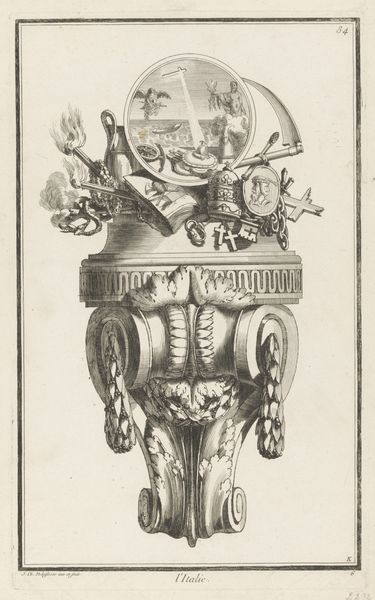
drawing, print, intaglio, engraving
#
drawing
# print
#
pen illustration
#
intaglio
#
old engraving style
#
mannerism
#
form
#
11_renaissance
#
pen-ink sketch
#
line
#
sketchbook drawing
#
engraving
Dimensions: height 241 mm, width 179 mm
Copyright: Rijks Museum: Open Domain
Curator: The density of line work in this engraving immediately commands attention. The details create dynamic movement across its surface. Editor: Indeed. Here we have "Kan met een oor dat onderaan een klauw heeft," which roughly translates to "Jug with an ear that has a claw at the bottom." This print, rendered sometime between 1533 and 1567, is attributed to the engraver Enea Vico. It’s currently housed in the Rijksmuseum. Curator: Vico's use of intaglio really brings a certain dynamism to what might otherwise be a static object. The play of light and shadow makes this decorative jug positively shimmer. Editor: It's certainly arresting. Beyond the form itself, it's important to contextualize such an object within the broader culture of the Renaissance. Decorative objects like these functioned not merely as utilitarian items but as potent symbols of power, wealth, and social status. Their visual language, laden with mythological or allegorical imagery, communicated sophisticated messages about the owner's erudition and place in society. Look at how it melds human and animal forms! Curator: Yes, that synthesis is particularly intriguing. The formal qualities create tension through juxtaposition. The grotesque ornamentation – faces and clawlike elements combined with elegant lines, suggests an intersection between beauty and the bestial. I note particularly how line creates texture in the central portion of the jug, lending it almost tactile qualities. Editor: The crab figure on the belly is particularly telling. Consider the astrological significance: Cancer, as a water sign, represents emotion, sensitivity, and the home. The home itself is not simply the physical space but also all aspects of the social collective of that location, indicating that social capital in the renaissance, similar to that today, depended heavily on interpersonal and home dynamics. Curator: You raise such a powerful point about context! Considering all of its elements—materiality, line work, shading—one gets a fascinating visual and tactile sense of Renaissance aesthetics. Editor: Indeed. Hopefully, that approach offers us richer insight into the original object of both design and context.
Comments
No comments
Be the first to comment and join the conversation on the ultimate creative platform.
